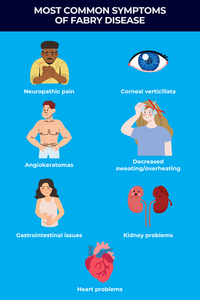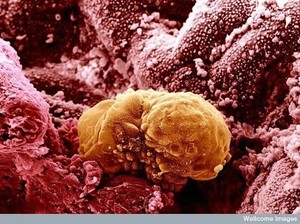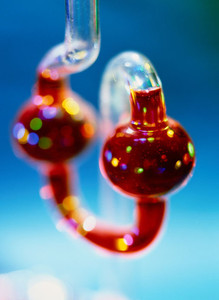The US Federal Trade Commission (FTC) released a report entitled Follow-on Biologic Drug Competition, which examines whether the price of biological drugs could be reduced by competition from so-called ‘follow-on biologics’ (FOBs) or biosimilars.
Biologicals are increasingly used to treat arthritis, cancer, diabetes, and other diseases. No pathway currently exists for FOBs to enter the market and compete with their pioneer counterparts. The FTC’s report concludes that providing the US FDA with the authority to approve such FOBs would be an efficient way to bring these lower-priced drugs to market.
Biological drugs are quite expensive – even more than branded versions of most traditional ‘small-molecule’ drugs. For example, the annual treatment with the biological drug Herceptin (a breast cancer treatment) can cost US$48,000 (Euros 34,400). FOBs, if brought to market, could reduce the estimated US$40.3 billion (Euros 28.7 billion) a year consumers spend on biological drugs. The FTC’s report examines how this might occur.
The Commission’s report summarises the findings of a public roundtable the agency held in November 2008 to examine how FOBs could enter the market, and what competition between FOBs and pioneer biological drugs likely would look like. The FTC also solicited two rounds of public comments on the issue of biological drug competition and accepted additional expert analysis in reaching its findings and developing forward-looking recommendations.
In large part, the report compares potential entry and competition by FOBs with entry and competition by small-molecule pharmaceuticals. In 1984, to encourage generic competition in the small-molecule drug market, Congress passed the Hatch-Waxman Act. The Act, among other things, gives the first-filing generic drug manufacturer a 180-day marketing exclusivity period after it introduces its product. The goal was to encourage innovation and generic drug entry by providing a period in which the first-filer would have no competition from other generic firms. As the price of generic drugs is often significantly less than their branded counterparts, generic entry can significantly reduce healthcare costs for consumers. In fact, after several generic competitors enter the market, prices for a particular drug can be reduced by up to 80%.
In recent years, ‘pay-for-delay’ patent settlements, in which manufacturers of brand-name drugs pay potential generic competitors to stay out of the market, have delayed consumer access to lower-cost generic drugs. Recently, US House Energy and Commerce Committee’s Commerce, Trade, and Consumer Protection Subcommittee passed the Protecting Consumer Access to Generic Drugs Act of 2009 (HR 1706), which would prohibit such anticompetitive settlements and, ultimately, could significantly lower prescription drug costs.
The Commission’s report states that competition by FOBs is unlikely to be similar to branded-generic drug competition because the substantial costs to obtain FDA approval, plus the substantial costs to develop manufacturing capacity, will limit the number of FOB competitors; the lack of automatic substitution between an FOB drug and a pioneer biological drug will slow the rate at which FOBs can acquire market share; an FOB drug also may have difficulty gaining market share due to concerns about safety and efficacy differences with the pioneer biological drug; and biological drugs are not currently reimbursed according to strategies that insurers often use to encourage the use of lower-priced drugs.
As a result of these factors, FOB entry, although important, will be less dramatic than generic drug competition. FOB entry is likely in biological drug markets larger than US$250 million (Euros 179 million) in annual sales. Only two or three FOB manufacturers are likely to attempt entry for a given pioneer drug product. These entrants are unlikely to introduce their drugs at discounts any larger than between 10 and 30% of the pioneer product’s price; the effect on pioneer manufacturers also will be different. They are expected to respond and offer competitive discounts to maintain market share and are likely to retain 70-90% of their market share and will continue to reap substantial profits, even after FOB entry.
Based on these findings, the report concludes that patent protection and market-based pricing will promote competition by FOBs, as well as spur biological innovation. It states that legislation to put a process in place for the abbreviated FDA approval of FOBs is likely to be an efficient way to bring FOBs to market, because of the time and cost savings it would provide.
In addition, the report states that the 12- to 14-year regulatory exclusivity period is too long to promote innovation by these firms, particularly since they will likely retain substantial market share after FOB entry. The report concludes that special procedures to resolve patent issues between pioneer and FOB manufacturers before FDA approval, which are not needed, could undermine patent incentives and harm consumers. Finally, the report states that FOB manufacturers are unlikely to need additional incentives – such as a 180-day marketing exclusivity period – to develop interchangeable FOB products.
“If Congress creates an efficient pathway to follow-on biologic drugs and, at least as important, ends ‘pay-for-delay’ pharmaceutical settlements that delay entry of traditional generic drugs, it will be taking a major step forward for both healthcare reform and affordable drugs for all Americans”, said FTC Chairman Jon Leibowitz.








 0
0










Post your comment